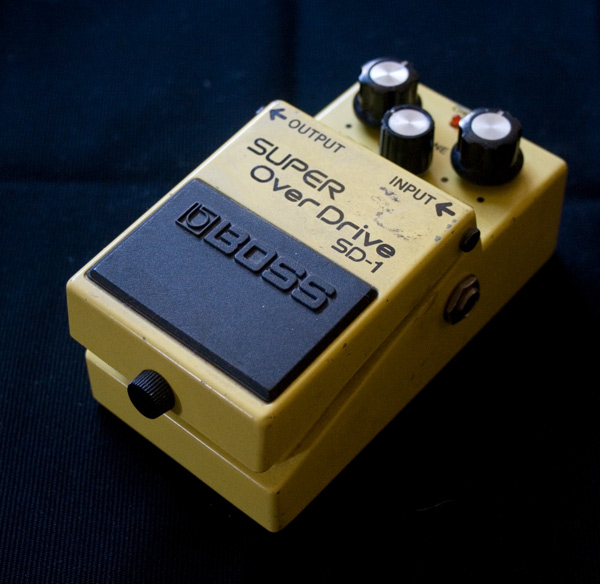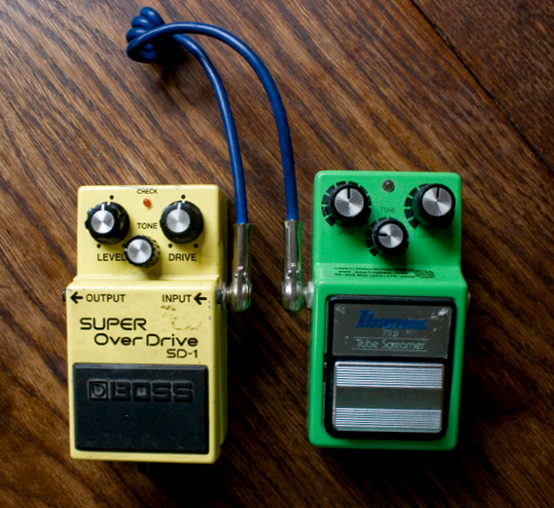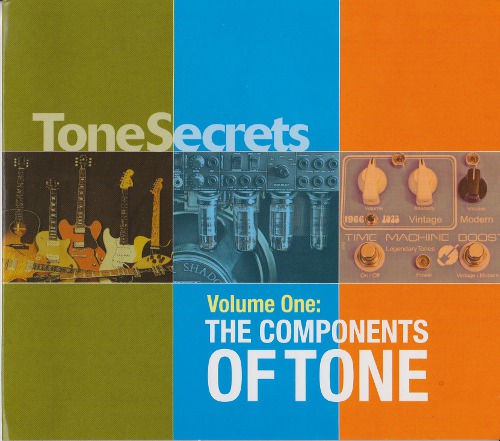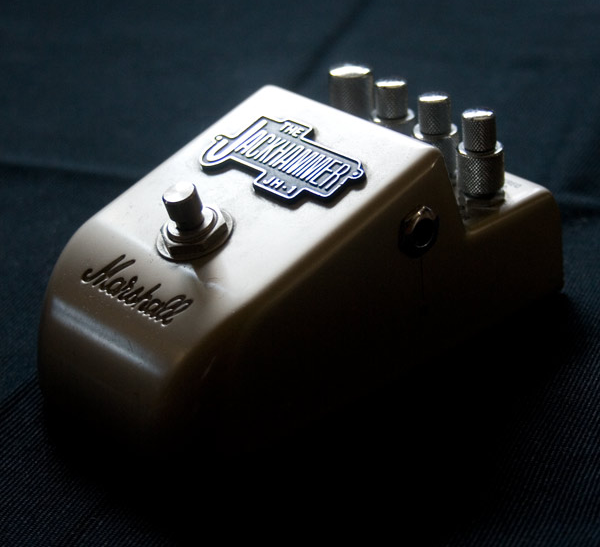A good overdrive pedal is a must have for nearly every guitarist. You can use it against a clean amp to obtain blues and classic rock tones, or you can use it to push an already overdriven amp or distortion pedal to reach for higher gain tones.
After introducing the Xotic BB Preamp as a possible alternative to the ubiquitous Ibanez Tube Screamer, I will now leave the expansive boutique route and go for a cheaper model: the BOSS SD-1. As with my previous post, I have made a video to illustrate my point (see the end of this post).

I know that it is trendy to bash BOSS pedals and that some guitarists only use expansive boutique pedals nowadays but I find this is a bit of an extreme position. There are very good models in the BOSS line and the SD-1, which has been in production for 29 years (!), is surely one of them.
The SD-1 is quite close in conception to a Tube Screamer and not so far tone-wise. It also sports the same three knobs: Drive (amount of overdrive), Level (output Volume) and Tone (Equalization). But I find it to have a bit more grit, it has a more “rock” tone whereas Tube Screamers lean more on the “blues” side (I am over simplifying here). Also, The BOSS SD-1 is a favorite among metal players to be used as a booster, not a main distortion. You won’t get a better and cheaper option to push an already overdriven Marshall amp over the edge.
This is exactly how Zakk Wylde used it for years before getting his own signature overdrive model with MXR. Even the almighty Eddie Van Halen had a BOSS SD-1 in his pedal board in the 90s, presumably used as a boost to give his Peavey amps a kick. In that respect, the level control is very useful on both the Tube Screamer or the SD-1. By cranking it while keeping the gain quite low, you can push any tube amp into natural overdrive.
And did I mention the BOSS SD-1 was cheap? I think I did but check out your favorite shop, you’ll know what I mean. Here in Europe, they go for for about 50€. And 29 years of production means there is plenty of them on the second hand market.
Is this the perfect overdrive? Of course not, otherwise there would be no other on the market. The SD-1 is quite noisy compared to boutique alternatives. The noise level is actually often in favor of boutique pedals when compared to mass produced models. Also, it suffers from the same “bass sucking” problem as Tube Screamers do when used against a clean amp (not so much when used against an already overdriven amp). In band situations, it is usually not a big problem as the bass frequencies are already occupied by other instruments though I can understand why some guitarists have a problem with it. Finally, when I mentioned earlier that it has more grit than a Tube Screamer, it can be a plus or not, depending on your style and preferences.
Video Demos
In this first video, I am comparing my Analogman modded TS9 Tube Screamer with the SD-1 using a Fender Stratocaster. I use various amount of gain and show at the end how it can be used to boost an amp, and a distortion pedal (a Proco RAT 2):
Gear used for the video: American Classics Stratocaster fitted with Kinman AVn blues pickups and 1974 Fender Champ. The amp was miked with a RODE NT-4. The recording was transferred into Cubase 5 to optimize the volume (compression) and add a hint of reverb.
In this second video, I show how The SD1 and the TS9 sound with a Gibson SG 61 reissue equipped with Humbuckers:
Gear used for the video: Gibson SG 61 Reissue with stock pickups and 1974 Fender Champ. The amp was miked with a RODE NT-4. The recording was transferred into Cubase 5 to optimize the volume (compression) and add a hint of reverb.



